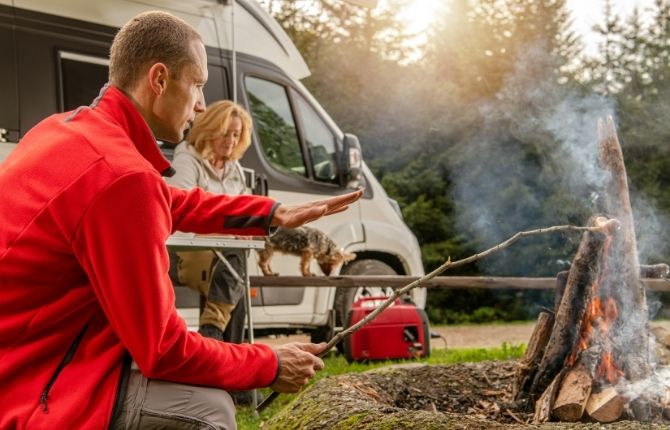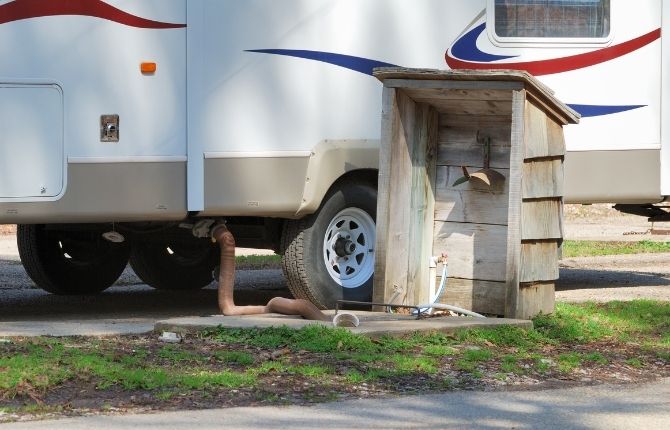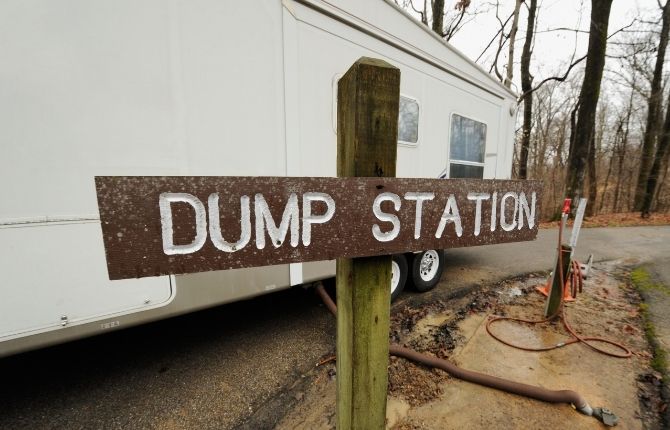Hitting the open road, traveling to new places, setting eyes on astonishing scenery, and just getting out into nature is the romanticized ideal of RVing. And, frankly, there is nothing wrong with that as it is all achievable!
But there is an unglamorous side to every adventure beyond the walls of civilization: dealing with human waste.
Wherever we go, our digestive systems come too, so the necessity of waste management does not disappear when no-brainer restrooms and septic systems do. Luckily, disposing of biowaste while traveling in a recreational vehicle does not have to be a big hassle since this is a well-traveled undertaking.
Therefore, one only needs to understand the basics before this process becomes another easy, natural part of the RVing experience.
Waste Tanks and Stations
Recreational vehicles frequently come equipped with toilets and sinks, meaning they must also have tanks to capture the water and waste. Since the tanks have a finite capacity, they must be emptied periodically to avoid overfilling.
Many campsites and other places set up for RV-based tourism will have dump stations available just for this purpose. Dump stations are communal septic tanks designed for safe RV waste disposal. Thus, your first sensible option for ridding your RV of biowaste is to look for your nearest dump station. Also, depending on the location, sometimes it is possible to find a sewer line hookup suitable for RV waste disposal.
Where to Find RV Dump Stations
Often, it is possible to Google search your nearest dump station or review one of many informational camper websites that keep thorough lists of such locations. For example, certain RV companies, parks, or camping groups may even have apps that offer similar guides.
However, if renting an RV, the odds are excellent that the rental provider can also supply the locations of dumping facilities. If all else fails, one can call ahead to the park or planned camping area and verify if any amenities are nearby.
How to Dump RV Waste
To recreational vehicle beginners, the actual process of disposing of the waste may seem like the most intimidating part. That is understandable, especially if someone is trying to figure it out for themselves.
Basic steps include:
- Donning protective gear/clothing (rubber gloves at least) just in case
- Hooking up the sewage drain hose to the RV’s black tank valve
- Hooking up the other end of the hose to the dumping station or sewer line
- Pulling the valve that allows the black tank to empty and waiting for it to drain completely
- Flushing the tank with water to clean it out and draining that water as well
- Repeating steps for the gray water tank if you have one
- Closing the valve and rinsing the inside of the hose so that rinsed water flows into the dumping station
- Disconnecting the hose and closing the connection for the dumping station
- Storing hose again for later use
Something to Keep in Mind
When researching RVs for sale or rent, one must check that the towing capacity and GBWR for the total weight are correct. According to Camping World, some points to consider are “the weight of your battery, the propane, any water you plan on traveling within your freshwater tank, and everything you pack inside the camper.”
Traveling in an RV is a rewarding experience for many. While the logistics of disposing of biowaste may feel alien at first, the process is pretty straightforward overall. Most people should have no problem managing their waste tanks and finding places to empty them.










